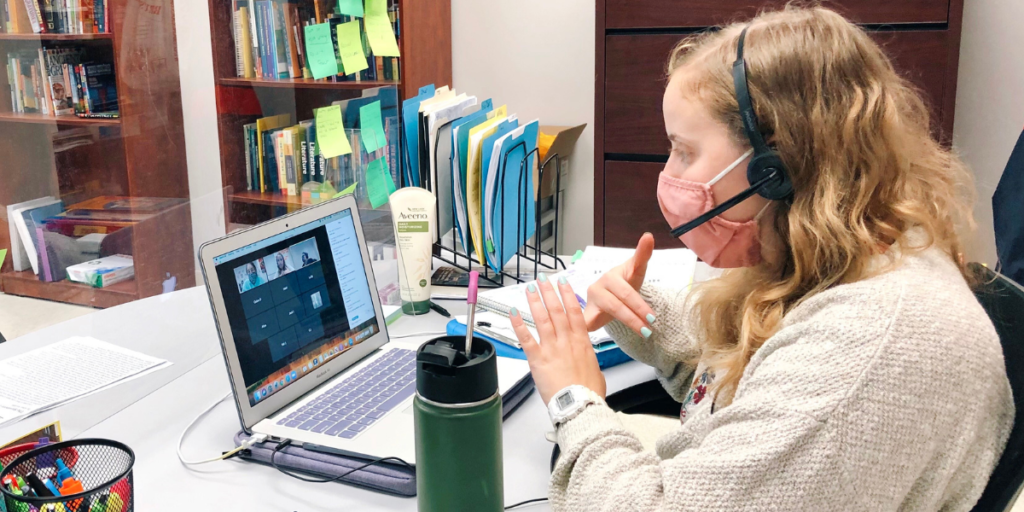Remote Learning Part II

Over the summer, we created a comprehensive COVID reopening plan which offered our students the choice of full time in-person or remote instruction. The vast majority of our students chose in-person and it has gone incredibly well. We certainly had our share of adjustments but overall the fall in-person instruction was quite successful. I think being able to offer in-person learning had significant positive effects on our students’ mental health. It also gave us an opportunity to onboard new students, establish rapport, and get our students comfortable with our routines and approach to learning. Read more about our first week of in-person instruction on our blog “First Week of In-Person and Remote Learning.”
An essential feature of our reopening plan was having a planned switch to remote learning from November 30th-January 18th. We anticipated that COVID rates would be high, it would be the height of flu season, and that many families might want to travel. As fate would have it, that was the right call. It reduced anxiety for both staff and families, knowing that we would be remote during the worst (hopefully) part of COVID.
One of the benefits of having a predetermined remote learning period was that it allowed us time to properly plan. It afforded us an opportunity to reflect on what went well last spring and what we wanted to change. Instead of scrambling to transition to remote learning, we were able to prepare for it, practice routines with our students, and make it the best it could be for our community. Our amazing teachers modified the curriculum for remote learning to make it more engaging and hands-on.
Round II of remote learning looks very different.
This time, we followed our in-person schedule with a few important modifications. Having looked at existing research, best practices suggest that students should receive 45 minutes of synchronous instruction with 15 minute breaks in between. So, we modified our schedule to align with that recommendation. We also offer two longer off-screen 45 minute breaks daily, one for lunch and one for a movement break. While we were still in-person, we used advisory time to have students practice checking their emails and google calendar. We also conducted practice Zoom classes, to ensure that students understood the platform and various ways to access content and ask questions. We practiced breakout rooms and the chat feature. We sent home books with students, so that they had them to read and prep for their book talks. We also sent each student and family their individual schedule with the appropriate Zoom links and have two school counselors available to troubleshoot and support students who were having difficulties. This preparation resulted in a smoother transition to remote learning.
When we transitioned prior to the Thanksgiving break, we were ready and prepared for remote learning. But remote learning is not easy. We are pleased that most students are doing quite well with remote learning, but it is an adjustment. Our extroverts miss the social interaction. Some of our kids who struggle with executive functioning skills occasionally forget to log back into class after their screen break. For our younger students, success sometimes depends on regular check-ins. While our staff do the best they can, reaching out to our youngest learners, many of our students do better when their parents are regularly checking in, reminding them to take their screen breaks, to eat a snack, go to the bathroom, or take a quick walk. We know this role is hard on parents who are juggling their own workload during the day and we are thankful for their extra assistance during remote learning.
Transitions can be hard, but we are embracing the challenge and using this time to help students continue to develop executive functioning skills that will serve them well in life.
For the vast majority of us, in-person learning is our preferred mode of both teaching and learning. We look forward to switching back to in-person learning in January. Until then, we will be there to support our students and make it work the best we can.
Posted in:
